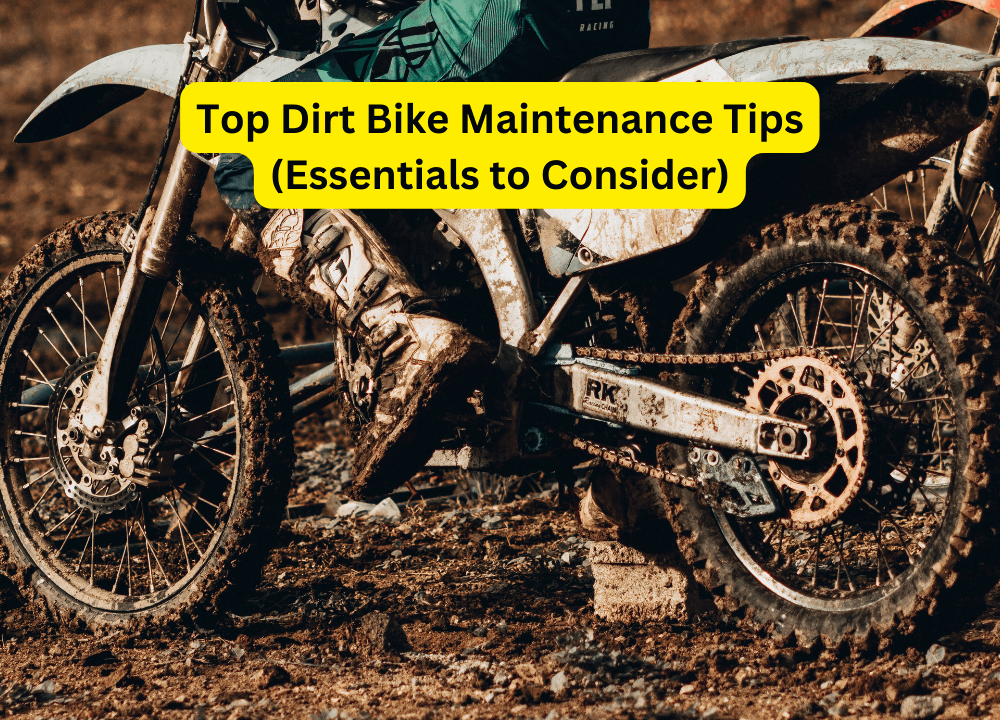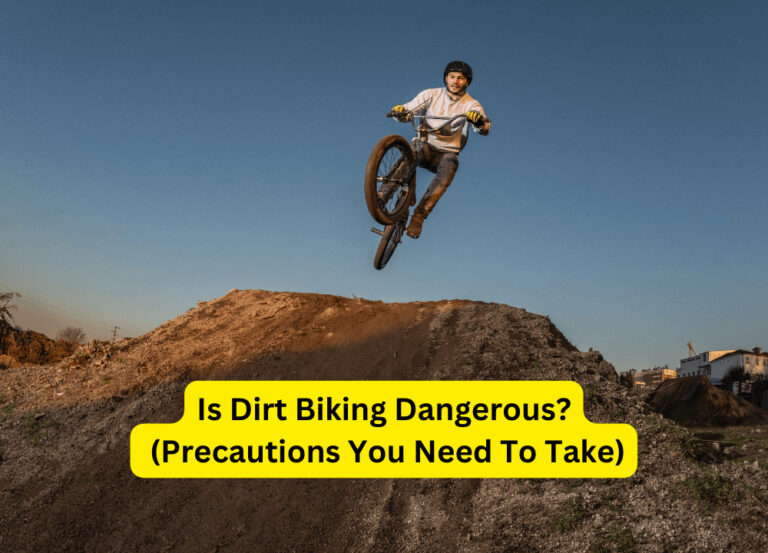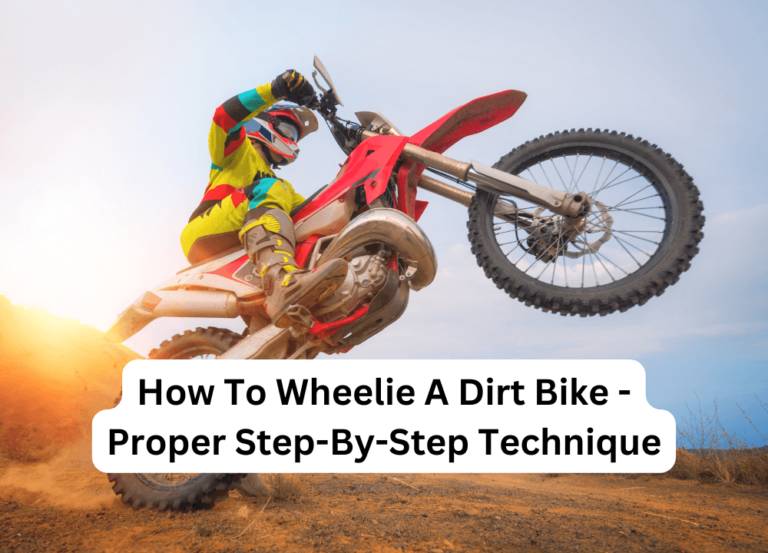Top Dirt Bike Maintenance Tips (Essentials to Consider)

Maintenance of a dirt bike is a must due to its frequent use. However, it will also help to run efficiently, safely and for as long as possible.
Therefore, to keep the machine excellent, you should undertake regular maintenance to keep your dirt bike in peak shape. That’s why for dirt bike maintenance, mostly we clear the track or way of any debris, including mud, water, and other materials. However, our several tips can help you save time and money.
Although this list is not all-inclusive, it covers the most fundamental components of routine dirt bike maintenance.
So, following are some crucial elements of maintaining a dirt bike:
Top things to keep your dirt bike looking its best
How far can you go to maintain your dirt bike in good condition? By following the suggestions below, you can keep your bike and pocket at their best
Dirt bike cleaning
Even though it doesn’t seem like maintenance, you may avoid accelerated wear and corrosion by clearing away grit and grime. You’d be astonished at how quickly some mud kinds may leave noticeable pitting after eating into an engine block and frame made of aluminum.
Also, grit will gather on the chain, the sprockets, between the brake pads and discs, and in all the other moving components, so it must be removed. Leaving this grit behind would not only hasten the wear and tear on each element but also make them less effective.
Air filter
It’s critical to keep the air filter lubricated and clean for maintaining the dirt bike. Cleaning the interior of the airbox is also a brilliant idea when you remove the seat to access the filter. An airbox wash cover can stop any dirt or water from entering the engine’s intake.
By keeping dirt and other particles out of the engine, the air filter. By the manufacturer’s instructions, clean or change the air filter often. An engine’s performance might be affected, and fuel consumption can rise.
Chain
Clearing the chain is also a critical part of dirt maintenance to avoid corrosion and guarantee smooth functioning. Chains and sprockets are the essential elements that transfer power to the back wheel.
When the chain is excessively tight or too loose, these components eventually degenerate and dissolve due to the ongoing tension.
The drive chain’s rotational force causes this damage, which indicates that it needs to be replaced.
Sprockets
Make sure the sprockets are in good condition and replace them if required. By the recommendations of the manufacturer, adjust the chain tension.
When you begin to see an uneven wear pattern between your teeth, this is a sign that your sprockets need to be repaired.
Bearings
When it comes to driving safely, wheel bearings have specific vital characteristics. This part supports the wheel’s weight and enables the wheel to revolve freely. The odd noise emanating from your dirt bike’s tyre is frequently the first indication of a bearing issue. We advise hiring experts to do this task!
Cables and controls
Lubricate the brake, clutch, and throttle cables to guarantee smooth functioning. Check that each cable operates smoothly, make any required adjustments, and replace any worn or broken lines immediately. Adjust the settings as appropriate after checking for any broken or loose parts.
Suspension
Inspect the forks, shocks, and other suspension parts for leaks, damage, or excessive play. Keep your suspension sag at the right level and change the settings to suit your riding style and preferences.
Oil changes
You should frequently replace the motor oil on your dirt bike if you ride it heavily or spend most of your time in the mud or dirt. Some advise changing your oil after each ride, while others suggest doing so every eight to ten operational hours. Follow your manufacturer’s instructions, but remember that your engine will likely last longer if you replace your oil more frequently.
Follow the manufacturer’s instructions for changing the engine’s oil and oil filter. Fresh oil helps lubricate the engine, decreasing friction and enhancing performance. Use only the prescribed oil type and viscosity.
Make it Greasy.
Grease lubricates crucial components and serves as a seal against water and debris. Check your steering head bearings, swingarm, wheel bearings, shock absorbers and forks, and the place where your air filter seals. Oil should be used around the air filter, seals, directions, and sprockets to minimize resistance and shield them from sand, dirt, and water incursion.
Leaks of Liquid
When your dirt bike is exposed to rugged terrain, fuel, oil, brake and clutch fluid, coolant, and fork seal leaks may happen. After each ride, inspect the seals surrounding the fill and drain plugs, the motor, and the tanks. Remember to keep an eye out for ground-level warning signals. Compared to waiting for the component to fail, replacing seals, plugs, and mending punctures is far simpler and more affordable.
System of electricity
Examine the batteries, wiring, and lights frequently. Battery terminals should be cleaned of any corrosion to ensure appropriate charging. Check the operation of the electrical parts, such as the turn signals and headlights.
System for Cooling
Check the coolant level often, and look for leaks or other damage in the hoses and radiator. To avoid engine overheating, flush and replenish the coolant as the manufacturer directs.
Plug-in Spark
When advised, or if it gets fouled, replace the spark plug. A clean spark plug guarantees Proper combustion and ignition, which boosts output and fuel economy.
Tire
It should go without saying that a flat tire will surely ruin a beautiful day of hiking. Because of this, you should always check the pressure in your tires before you ride to make sure they are at the right level for the terrain.
A greater PSI is often necessary in dry weather, so see your owner’s handbook for recommendations. Additionally, you have to always have a few extra tyre tubes available as a backup.
Maintenance and Overall Inspection of Dirt Bike Additional Items
Taking care of everything big and small on a Dirt Bike will extend its life. That’s why here are a few of our tips to help you understand the inspection of items that need to be examined.
- It’s best to get expert advice from a certified dirt bike technician or repair facility if you’re unclear about how to do a particular maintenance chore or feel uneasy about it
- Visually examine the pieces as you clean them to see whether they need to be replaced.
- Inspect the screws and tighten them.
- Regularly check for loose nuts, bolts or fasteners on your dirt bike.
- Ensure that the hardware screws do not come free during intense vibrations.
- Verify the cords and controls.
- To stop additional harm, take care of any difficulties right away.
- Check the gas and connection wires; replace any cracked or vibrated wires.
- Make sure there are no fluid leaks, damage, or wear indicators.
- Remember to refer to the owner’s handbook for your dirt bike for detailed manufacturer-provided maintenance instructions and intervals.
Equipment For Dirt Bike Maintenance:
Although working on a dirt bike doesn’t often require “special” tools, a variety of tools are nonetheless required.
Here are several things you could require:
- T-handles
- Disc wrenches
- wire cutters
- a torque wrench
- Tyre pliers
- Tyre pressure
- Chain devices
- Socket wrenches
- wheel gauges
- Wrenches for axle and stem nuts
FINISHING UP!
If you follow these straightforward maintenance procedures, you’ll find that keeping a dirt bike is easy. Dirt bikes need regular maintenance and upkeep to perform at your desired level, but that attention doesn’t require time. After every ride, several things should be maintained for the optimal performance of a dirt bike.
So, follow our dirt bike maintenance guide to keep your dirt bike functioning as it should. Remember that your dirt bike must withstand tremendous stress throughout each ride; if these measures are omitted, its performance will suffer.







